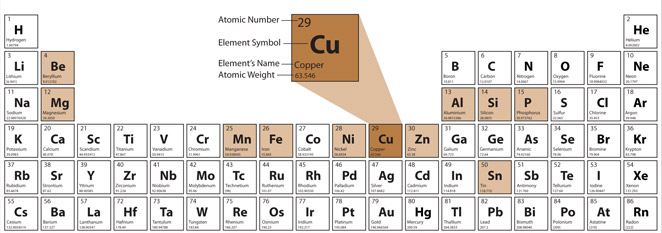Copper, a metal revered since antiquity, can be perceived as a shimmering bridge between the realms of nature and innovation. While often overshadowed by its glimmering cousin gold, copper possesses a charm and a mystique all its own. This article uncovers eight captivating aspects of copper that reveal why it has captivated human imagination for millennia.
1. The Age-Old Presence of Copper
Dating back over 10,000 years, copper is one of the first metals to be utilized by humans. It marked a pivotal evolution from the Stone Age into the Copper Age, signifying the dawn of metallurgy. In this transitory phase between simpler tools and intricate weaponry, copper embodied the alchemy of creation, fundamentally altering the trajectory of human civilization.
2. A Symphony of Color
When deciphering the visual lingo of metals, copper relays a tale imbued in warm hues. With a radiant orange-brown sheen, it draws the eye akin to the setting sun. Upon exposure to the elements, its surface begins to develop a natural patina, often termed verdigris, which can range from rich blues and greens to breathtaking turquoises. This evolving canvas transforms copper into a living sculpture, echoing the passage of time.
3. A Conductor of Life
Copper certainly doesn’t shy away from the spotlight when it comes to functionality. As an excellent conductor of electricity, copper is akin to a conductor leading an orchestra—facilitating the smooth flow of energy throughout our technological creations. This property has made it indispensable in the manufacturing of wires and electronic devices. Without copper, the modern world would be a cacophony of interrupted signals and static.
4. Bactericidal Properties: Nature’s Antiseptic
The allure of copper extends beyond visual aesthetics and electrical prowess. Fascinatingly, it also possesses natural bactericidal properties that can inhibit the growth of harmful pathogens. Ancient civilizations recognized this characteristic, as copper vessels were used to store water and food. Today, it is incorporated into hospital surfaces and doorknobs, effectively reducing the spread of infections, making it a truly magical ally in public health.
5. A Traveler of Time: Archaeological Significance
Digging deeper into the Earth’s crust, one frequently encounters relics of humanity’s relationship with copper. Archaeologically, copper artifacts have been unearthed from ancient civilizations across the globe—from the Minoans to the Egyptians—each tethering the metal to legendary stories. It serves as a tangible connection to the past, illuminating our historical narrative, much like a key unlocking closed doors to lost worlds.
6. Alchemical Symbolism: The Link to Transformation
In the realm of alchemy, copper stands as a symbol of transformation and rejuvenation. Often associated with the goddess Venus, copper has been linked to beauty, love, and harmony. This ancient symbolism continues to resonate today; holistic practices employ copper to enhance energy flow within the human body, grounding it as a mediator between the physical and spiritual realms—a truly enchanting notion.
7. A Versatile Element: From Architecture to Art
Expanding its repertoire, copper has made an indelible mark in architecture and the arts. Iconic structures such as the Statue of Liberty and the dome of London’s Old Royal Naval College showcase copper’s durability and aesthetic appeal. As it weathers, its patina provides buildings with character, etching stories into their surfaces. Furthermore, artists have long utilized copper in artwork and sculptures, showcasing its malleability and allowing it to transcend mere functionality, evolving into sheer artistry.
8. The Future of Copper: Sustainable Excellence
As the world grapples with sustainability, copper emerges as a front-runner in green technologies. Its recyclability gives it a second life that few materials can match, reducing the need for mining while preserving resources. Moreover, copper is a key component in renewable energy systems, including solar panels and wind turbines, ushering in a cleaner, more sustainable future. This aspect reinforces copper’s status as not merely a relic of the past, but as a beacon guiding us toward an innovative tomorrow.
In conclusion, copper is not just a metal but a vessel carrying the weight of history, beauty, and advancement. From its ancient beginnings to its modern applications, it indeed possesses a magical quality that transcends utility. The next time one admires a copper artifact or experiences the warmth of its hue, remember that this metal encapsulates a rich tapestry of human achievement, connection, and the unyielding quest for progress.






